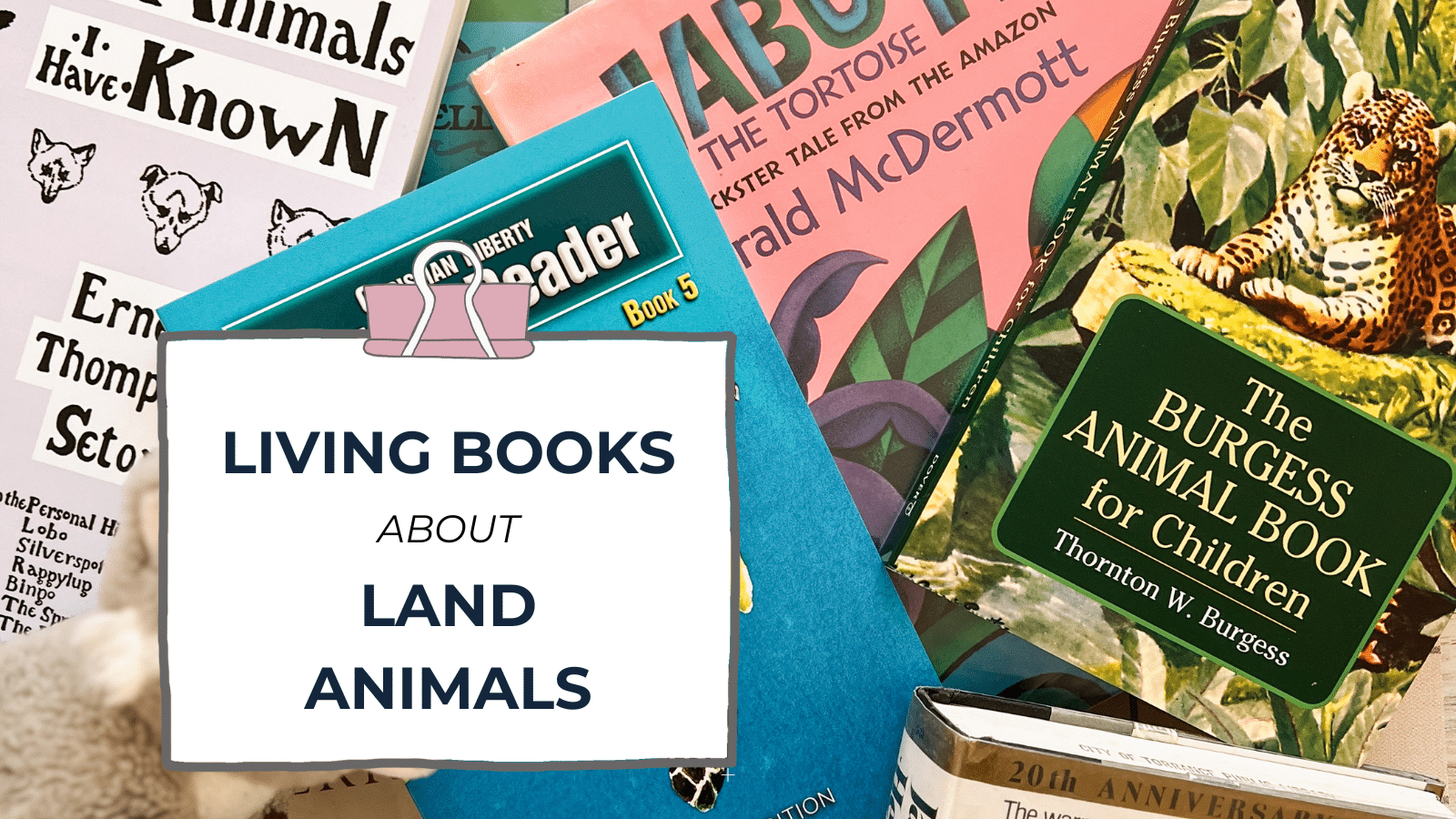
14 Living Books About Land Animals
This post rounds out 14 living books about land animals to pair with Exploring Creation with Zoology 3: Land Animals. Charlotte Mason’s ideas are a pretty big deal around here. Her view of educating the whole child was evidence of her respect their personhood. At Apologia, we aim to incorporate her principles in the design of our curriculum so that they are Charlotte Mason inspired.
One of Miss Mason’s tools was the use of selecting the choiciest of literature for educating all ages. Would living books be appropriate in the teaching of scientific subjects? Absolutely!
Why Use Living Books to Teach Science?
Develop a Love for Science
Depending on the approach, science can easily become a dry subject for students. My own memory of science in public school was not something I looked forward to. Living books about scientific topics can feel like a breath of fresh air to your study!
Retention of Scientific Information
Since the information is presented more in a narrative format rather than factual lists to memorize, more is retained due to the nature of the delivery. Stories are memorable and evoke feelings and thoughts, which stay with us longer.
Living Books Pair Well With Textbooks
Just because you love the Charlotte Mason philosophy of education, you don’t need to turn your back on other kinds of books. In fact, living books paired with different curriculum spines provide a wide feast of learning. Each has their purpose, and can work well together to bring about a robust year of homeschooling.
14 Living Books About Land Animals
- The Way Life Works: The Science Lover’s Illustrated Guide to How Life Grows, Develops, Reproduces, and Gets Along by Mahlon Hoagland
- Christian Liberty Nature Reader Book 5
- The Burgess Animal Book for Children by Thornton Burgess
- Song of the Wild: A First Book of Animals by Nicola Davies
- Jabuti the Tortoise: A Trickster Tale from the Amazon by Gerald McDermott
- Dinosaur Mountain: Digging into the Jurassic Age by Deborah Kogan Ray
- All Creatures Great and Small by James Herriot
- My Family and Other Animals by Gerald Malcolm Durrell
- Wild Animals I Have Known by Ernest Thompson Seton
- The Tale of Peter Rabbit by Beatrix Potter
- James Herriot’s Treasury for Children by James Herriot
- A Butterfly is Patient by Dianna Hutts Aston
- Paddle to the Sea by Holling Clancy Holling
- John Muir: Naturalist, Writer, and Guardian of the North American Wilderness by Sally Tolan
Exploring Creation with Zoology 3: Land Animals
There are 13 lessons in this one-year Zoology 3 course. Detailed lesson plans as well as a suggested daily schedule are included in the notebooking journal. This will set you and your student up for success as they work through the course, while also providing flexibility to meet the needs of your student and your family.
Packed with vivid photos and a variety of hands-on activities and experiments that bring Zoology to life, the student textbook and the student notebooking journal team up to provide engaging hands-on activities to bring learning to life off the page. All of the activities and experiments use easy-to-obtain household items and truly make the lessons come alive!
Hands-on Activities and Experiments
Some of the activities and experiments your student will complete in this course are playing a predator with colored candies that hide in camouflage, acting like a primate to judge depth perception, discovering why giraffes have high blood pressure, identifying animal tracks, dissecting owl pellets and its last meal, and much more!
All activities and projects in this course use easy-to-find household items and truly make the lessons fun!
Here more from author Jeannie Fulbright on this episode of the Let’s Talk Homeschool podcast!

